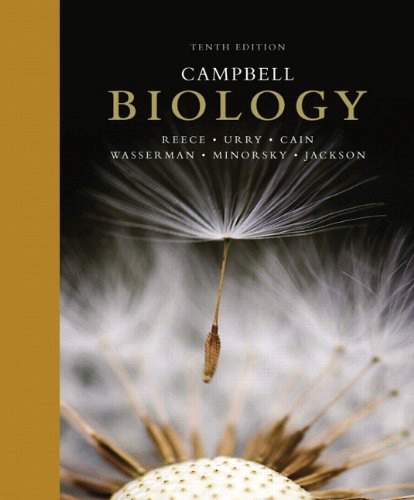Loading...

This is a quick preview of the lesson. For full access, please Log In or Sign up.
For more information, please see full course syllabus of Biology
For more information, please see full course syllabus of Biology
Biology Cells: Parts & Characteristics
Lecture Description
In this lesson, our instructor Bryan Cardella gives an introduction on cell parts and cell characteristics. He starts by explaining microscopes, the cell theory, the characteristics of life, prokaryote and eukaryote. He then goes on to explain the different cell parts.
Bookmark & Share
Embed
Share this knowledge with your friends!
Copy & Paste this embed code into your website’s HTML
Please ensure that your website editor is in text mode when you paste the code.(In Wordpress, the mode button is on the top right corner.)
×
- - Allow users to view the embedded video in full-size.
Next Lecture
Previous Lecture










































 Answer Engine
Answer Engine

0 answers
Post by Veer Shah on September 7, 2023
By the way, RBC's or Red Blood Cells, don't have ribosomes, mitochondria or a nucleus so the statement you made 30 minutes into the video was false. Thanks!
1 answer
Mon Sep 17, 2018 12:56 PM
Post by Daniella L on September 15, 2018
Thank you so much for your talk about cells!!!! I learned a lot!!!
2 answers
Last reply by: Angela Qian
Sat May 20, 2017 10:36 PM
Post by Angela Qian on May 20, 2017
I think that thIs might be considered a chemistry question, but approximately how many atoms are in a cell?
1 answer
Last reply by: Angela Qian
Sat May 20, 2017 11:27 AM
Post by Evan Wang on May 11, 2017
the cell in a nutshell.
2 answers
Last reply by: Scott Pearce
Fri Jun 17, 2016 7:03 AM
Post by Scott Pearce on June 14, 2016
sorry so, what happens in the rough ER that is different to the Golgi Apparatus ? sorry about that
2 answers
Last reply by: Jessica Lee
Sat Jun 11, 2016 12:42 PM
Post by Jessica Lee on June 6, 2016
What does it mean by membrane bound organelle? Is it same as displaying organization?
1 answer
Sun Feb 1, 2015 11:38 AM
Post by Brittney Marshall on January 31, 2015
Why is this video not working?
2 answers
Last reply by: Ivan de La Grange
Thu Aug 28, 2014 8:33 AM
Post by Ivan de La Grange on August 26, 2014
How do vacuoles obtain food or water, is this from lysosomes? In addition, does the mitochondria accumulate food from this area before it makes ATP?
2 answers
Last reply by: David Gonzalez
Wed Jun 25, 2014 11:36 PM
Post by David Gonzalez on June 25, 2014
In the nucleus, you mentioned that there was a double membrane. Does this mean that the nucleus has two sets of bilayers? For instance, polar head, fatty acid tail, polar head (for first one) then polar head, fatty acid tail, polar head (for second one)? Thank you!
1 answer
Tue Mar 25, 2014 10:14 PM
Post by Lauren Mason on March 25, 2014
Is a plasma membrane the same thing as a cell membrane?
1 answer
Mon Mar 10, 2014 10:24 AM
Post by inigo atilano on March 10, 2014
i'm having trouble with the logging in to my last location where i left off for example mitochondria. Once i close the computer and i logged back on, i'm unable to continue where i left off. I would have to re-watch the entire video and that is time consuming. I need your help.